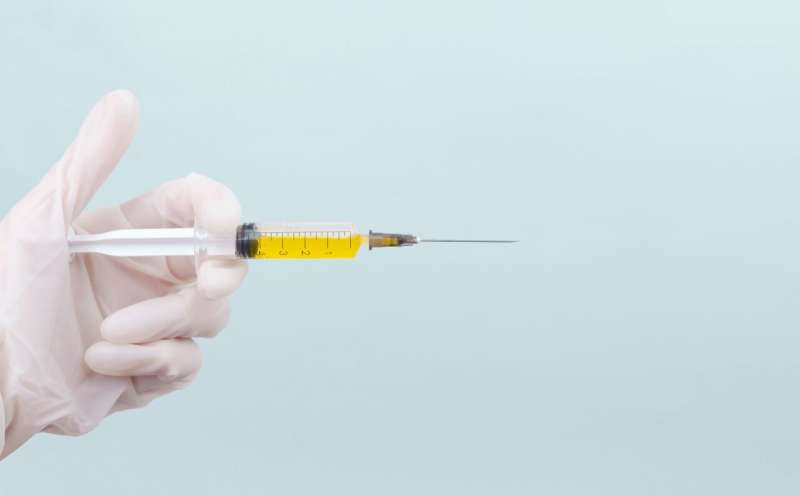This article has been reviewed according to Science X's editorial process and policies. Editors have highlighted the following attributes while ensuring the content's credibility:
fact-checked
peer-reviewed publication
trusted source
proofread
Study examines facilities' low use of monthly injections for treating opioid addiction

Compared to taking a daily pill, a monthly dose of long-acting injectable (LAI) buprenorphine can be a simpler and more effective treatment for people with opioid use disorder. But do substance use treatment facilities in the United States take advantage of this highly effective medication?
To answer that question, researchers from the University of Chicago spent nearly a year analyzing data from the National Substance Use and Mental Health Services Survey. They found that only 32.6% of substance use treatment facilities that offered medications for opioid use disorder offered LAI buprenorphine to their patients. The researchers suggested that administrative obstacles make it more difficult—and often more expensive—to obtain LAI buprenorphine compared to the oral version of the medication.
The study, published in the Journal of the American Medical Association (JAMA) in January, also revealed that facilities offering primary care were more likely to offer LAI buprenorphine. The researchers hypothesized that the difference may be due to those facilities facing fewer regulatory and administrative hurdles to prescribe the medication as a monthly injection.
"This paper highlights gaps that exist in the system," said Nitin Vidyasagar, the study's lead author and a second-year student at the University of Chicago Pritzker School of Medicine. "We can now use the information to help treat people who need it the most."
Samuel R. Bunting, MD, MSHA, a UChicago Medicine adult psychiatry resident and the study's second author, hopes the study will serve as "a guidepost in the sand" to measure future progress with this underused and potentially lifesaving medicine.
"The takeaway is, we still have a lot of work to do to make the full complement of opioid treatment options available to patients," he said.
Vidyasagar and Bunting came up with the idea for this paper while studying how resources for HIV prevention were distributed in health care facilities. Bunting is also studying the use of LAI medications for psychiatric conditions, research prompted by frustration with difficulties getting these medicines for his own patients.
Vidyasagar and Bunting collaborated with two UChicago Medicine staff members for this JAMA study: addiction medicine specialist and primary care doctor Mim Ari, MD, and Pritzker Dean for Medical Education Vineet Arora, MD, MAPP.
Given the epidemic levels of opioid addiction, Ari said she hopes the paper sparks conversations on how to design better health policies, remove barriers and build partnerships that will support sustainable recovery for people with opioid use disorder.
"I hope it's seen as a call to action, to say there's more that we can be doing as clinicians with this treatment," she said.
Pritzker School of Medicine has been nationally recognized for its work training medical students to address patients with opioid use disorder in the emergency room.
Students developed an O.P.I.A.T.E. initiative—Outpatient Principles in Addiction Training and Education—that was implemented in UChicago Medicine's Emergency Department in 2019 and scaled up to all incoming students as part of the new Pritzker Phoenix curriculum.
The initiative involves screening patients who may be at risk for opioid overdose and supplying them and their close contacts with a life-saving naloxone kit to take home.
More information: Nitin Vidyasagar et al, Availability of Long-Acting Injectable Buprenorphine at Substance Use Treatment Facilities in 2021, JAMA (2024). DOI: 10.1001/jama.2023.26522


















